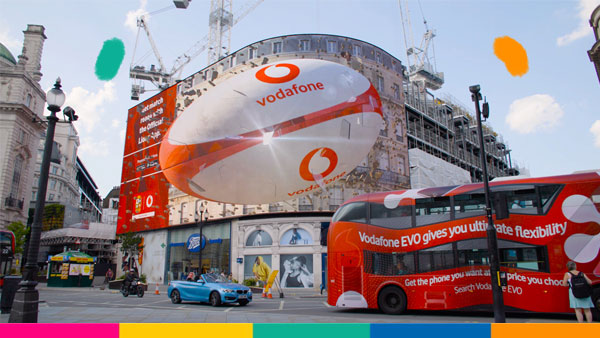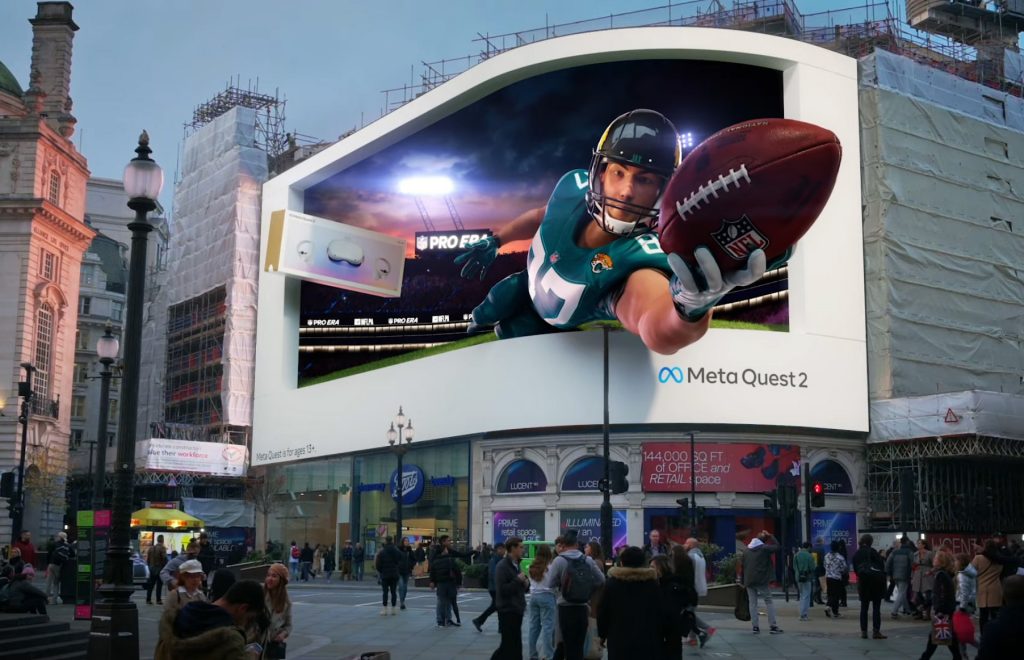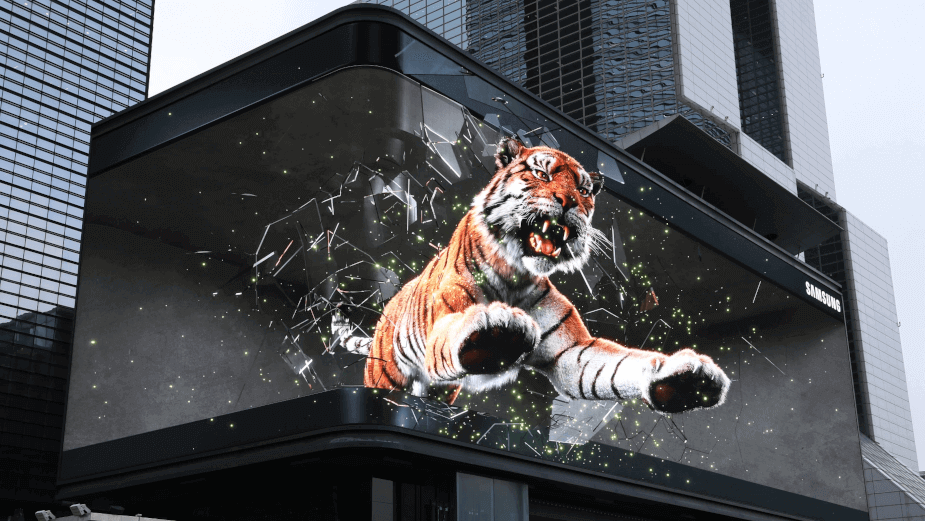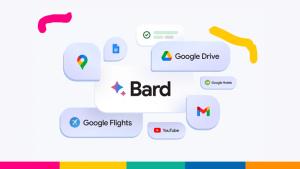Call Us: (256)762 179048

Billboards have been around for centuries, and they remain a popular form of outdoor advertising today. However, traditional 2D billboards are starting to look a bit dated in the age of digital technology. That’s where 3D billboards come in.
3D billboards use a variety of technologies to create the illusion of depth and movement. This makes them much more eye-catching and engaging than traditional 2D billboards. As a result, 3D billboards are becoming increasingly popular with advertisers.
In this article, we will take a closer look at 3D billboards. We will discuss how they work, the benefits they offer, and some of the challenges that need to be addressed before they can become mainstream.
The first 3D billboards were invented in the early 2000s. However, it was not until the late 2010s that 3D billboards started to become more mainstream. This is due to a number of factors, including the declining cost of LED technology and the increasing availability of high-quality 3D content.
One of the first notable examples of a 3D billboard was in 2009, when Coca-Cola erected a 3D billboard in Times Square that showed a bottle of Coke being poured into a glass. The billboard was a huge success, and it helped to popularize the idea of 3D advertising.
In the years since, 3D billboards have become increasingly sophisticated and creative. Advertisers are now using 3D billboards to create truly immersive experiences for viewers. For example, some 3D billboards use motion tracking technology to create the illusion that the objects on the billboard are following the viewer. Other 3D billboards use projection mapping technology to create 3D images on buildings and other structures.
How do 3D billboards work?

There are a few different ways to create a 3D billboard. The most common method is to use a lenticular lens. Lenticular lenses are made up of a series of tiny ridges that refract light in different directions. When a viewer looks at a 3D billboard with a lenticular lens, they see a different image depending on their angle of view. This creates the illusion of depth and movement.
Another way to create a 3D billboard is to use projection mapping. Projection mapping uses a projector to cast images onto an object. The projector is programmed to distort the images in a way that creates the illusion of depth. Projection mapping can be used to create 3D billboards on a variety of surfaces, including buildings, bridges, and even people.
Benefits of 3D billboards
3D billboards offer a number of benefits over traditional 2D billboards. First, they are much more eye-catching and engaging. People are naturally drawn to 3D images, and 3D billboards can be used to create truly stunning and immersive experiences.
Second, 3D billboards can be used to tell stories in a more creative and engaging way. For example, a 3D billboard could be used to show a product in action or to create a sense of movement and excitement.
Third, 3D billboards can be more targeted than traditional 2D billboards. Advertisers can use sensors to track the movement of viewers and display different images depending on their location. This allows advertisers to tailor their messages to specific audiences.
Challenges of 3D billboards
While 3D billboards offer a number of benefits, there are also some challenges that need to be addressed before they can become mainstream. One challenge is the cost. 3D billboards are more expensive to produce and install than traditional 2D billboards.
Another challenge is the technical complexity. 3D billboards require specialized equipment and software to operate. This can make them difficult to maintain and repair.
Finally, there are some regulatory concerns surrounding 3D billboards. Some cities have banned or restricted the use of 3D billboards because they are concerned about safety and distraction.
Comparison of 3D billboards and traditional 2D billboards
Here is a table comparing 3D billboards and traditional 2D billboards:
| Feature | 3D billboards | Traditional 2D billboards |
|---|---|---|
| Visual impact | High | Medium |
| Storytelling potential | High | Medium |
| Targeting potential | High | Medium |
| Cost | High | Medium |
| Technical complexity | High | Medium |
| Regulatory challenges | Yes | No |
Future of 3D billboards
The future of 3D billboards is bright. As the technology continues to develop and costs come down, 3D billboards are likely to become more and more common. We may even see a day when 3D billboards are the norm and traditional 2D billboards are the exception.
In the meantime, 3D billboards are already being used by some of the world’s biggest brands to create truly impressive and innovative advertising campaigns.
For example,
Coca-Cola has used 3D billboards to create the illusion of a giant bottle of Coke being poured into a glass.
Coca-Cola has been a pioneer in using 3D billboards to create innovative and engaging advertising campaigns. Here are some notes about some of Coca-Cola’s most notable 3D billboards:
- Times Square 3D Billboard (2009): This billboard was one of the first major 3D billboards to be erected. It showed a bottle of Coke being poured into a glass, and it was a huge success with viewers.
- World’s First Robotic Billboard (2017): This billboard was also located in Times Square, and it was the first of its kind in the world. It used 1,760 independently moving LED screens to create stunning 3D images.
- Girl with a Pearl Earring Billboard (2023): This billboard was located at São Paulo’s Guarulhos International Airport, and it featured a 3D rendering of Vermeer’s iconic painting “Girl with a Pearl Earring.” The billboard allowed viewers to interact with the painting and even receive a free bottle of Coke from the Girl with a Pearl Earring.
Samsung has used 3D billboards to create the illusion of a giant TV screen floating in the air.
In 2022, the Year of the Tiger, Samsung Electronics launched a striking out-of-home campaign using a giant 3D billboard that grabbed a worldwide attention.
Just before the Galaxy Unpacked 2022, one of the most anticipated tech events of the year where Samsung reveals its latest innovations, the global activation took place at landmarks of the world’s most vibrant cities including New York, London, Dubai, Kuala Lumpur, Beijing, Shanghai, Guangzhou, and Seoul to build up anticipation towards the new Galaxy S22 series.

Conclusion
3D billboards offer a number of advantages over traditional 2D billboards. They are more eye-catching and engaging, they can be used to tell stories in a more creative and engaging way, and they can be more targeted to specific audiences. However, 3D billboards are also more expensive to produce and install, they are more technically complex, and there are some regulatory concerns surrounding their use.
Overall, 3D billboards are a promising new technology with the potential to revolutionize the outdoor advertising industry. However, it is likely that it will take some time for 3D billboards to become mainstream.
I hope this article was helpful
If so, please give it a like and check out for more articles to help you grow your business
Let’s catchup in the next one.





